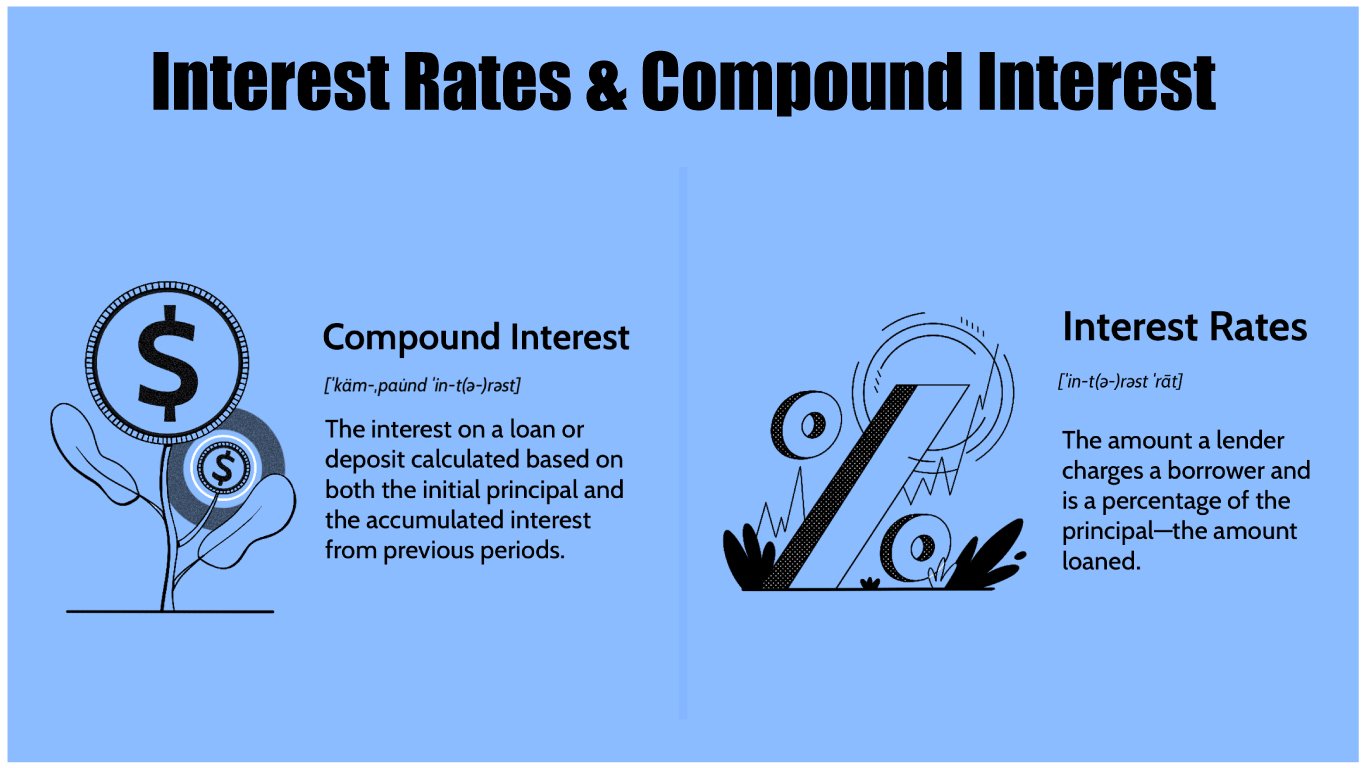Understanding Interest Rates and Compound Interest: The Power of Time and Money
When it comes to managing finances, whether saving money or taking out a loan, understanding how interest rates and compound interest work is essential. These two financial concepts can make a huge difference in how quickly your savings grow—or how much you end up paying back on borrowed money.
What Are Interest Rates?
An interest rate is the cost of borrowing money, or the reward for saving it. It’s usually expressed as a percentage of the principal amount (the original sum of money).
-
If you’re borrowing, you pay interest to the lender.
-
If you’re saving, the bank pays you interest.
For example, if you deposit $1,000 into a savings account with a 5% annual interest rate, you’ll earn $50 in interest after one year (assuming simple interest).
Types of Interest Rates:
-
Fixed Interest Rate: Doesn’t change during the term of the loan or investment.
-
Variable Interest Rate: Changes based on the market or a benchmark (like the prime rate).
-
Nominal vs. Real Interest Rate: Nominal is what you see; real interest rate accounts for inflation.
Real Interest = Nominal Rate – Inflation Rate
Simple Interest vs. Compound Interest
Simple Interest:
This is calculated only on the original principal. The formula is:
Simple Interest = P × r × t
Where:
-
P = principal amount
-
r = interest rate (annual)
-
t = time in years
So, if you invest $1,000 at 5% for 3 years, you’ll earn:
$1,000 × 0.05 × 3 = $150
Compound Interest:
Compound interest is more powerful. It’s calculated not just on the principal, but also on the accumulated interest. This means your money earns interest on interest.
The formula is:
Compound Interest = P × (1 + r/n)^(nt) - P
Where:
-
P = principal amount
-
r = annual interest rate
-
n = number of times interest is compounded per year
-
t = time in years
Let’s say you invest $1,000 at 5% compounded annually for 3 years:
$1,000 × (1 + 0.05)^3 = $1,157.63
So, you earn $157.63 in interest instead of just $150. The difference grows significantly over time.
The Power of Time
Compound interest rewards patience. The earlier you start saving, the more time your money has to grow. A small investment made early can outgrow a larger investment made later. This is why financial experts always encourage starting to save or invest as early as possible.
Practical Tips to Use Compound Interest Wisely
-
Start Early: Even small amounts grow significantly with time.
-
Invest Regularly: Use dollar-cost averaging with consistent monthly contributions.
-
Avoid High-Interest Debt: Especially credit cards and payday loans.
-
Understand Your Compounding Frequency: Daily, monthly, quarterly—all affect returns.
-
Reinvest Returns: Don’t withdraw interest; let it compound.
Interest Rates on Loans
On the flip side, if you're taking out a loan—say, for a car or home—higher interest rates mean more money out of your pocket. Understanding whether interest is compounded and how frequently can help you compare loan offers and avoid expensive debt.
Final Thoughts
Interest rates and compound interest might seem like small percentages, but over time, they play a major role in your financial future. Whether you’re saving or borrowing, being aware of how interest works allows you to make smarter financial choices. Think of compound interest as a double-edged sword—it can grow your savings exponentially or increase your debt if you're not careful.
Start early, be consistent, and let time and compound interest work in your favor.
